#dioram
Explore tagged Tumblr posts
Text
Idiosyncratic genreless sound. The 16 chord, Rumrom-powered artisanry also defies genre.
-Burrn
#Moon: Remix RPG Adventure#Moon Remix RPG Adventure#Moon#love-de-lic#love de lic#Dioramic Phono Odor#Hirofumi Taniguchi#moon disc#video game music#vgm#vg music#video game soundtrack
12 notes
·
View notes
Text
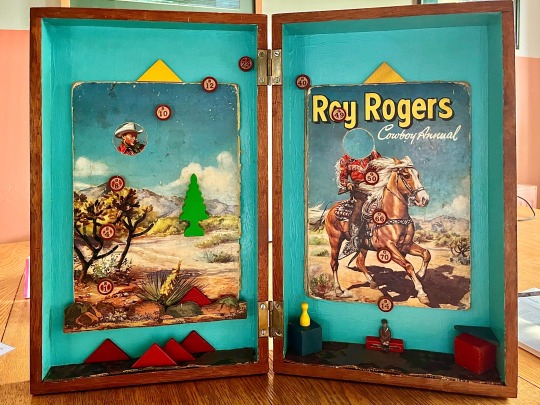
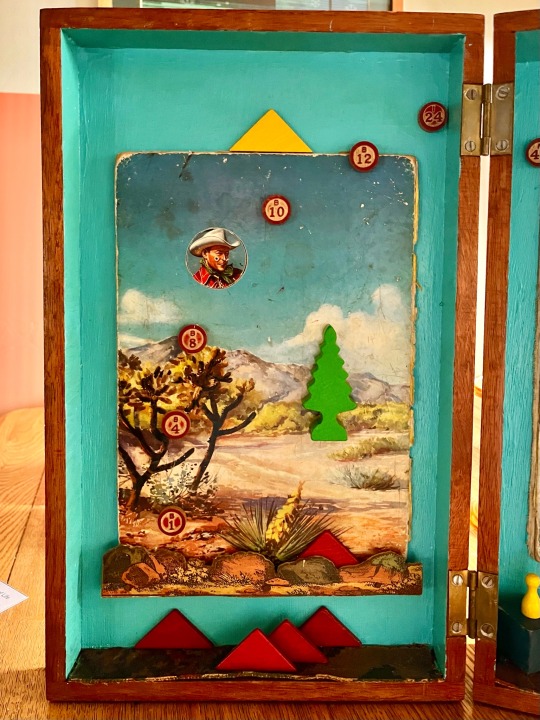
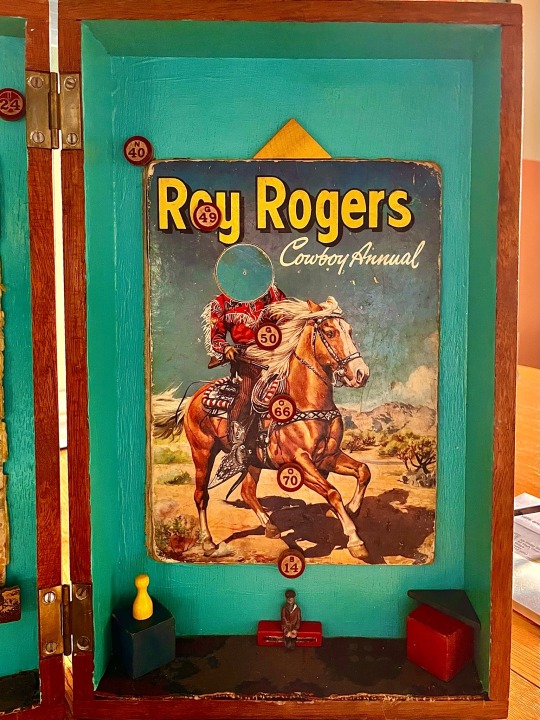
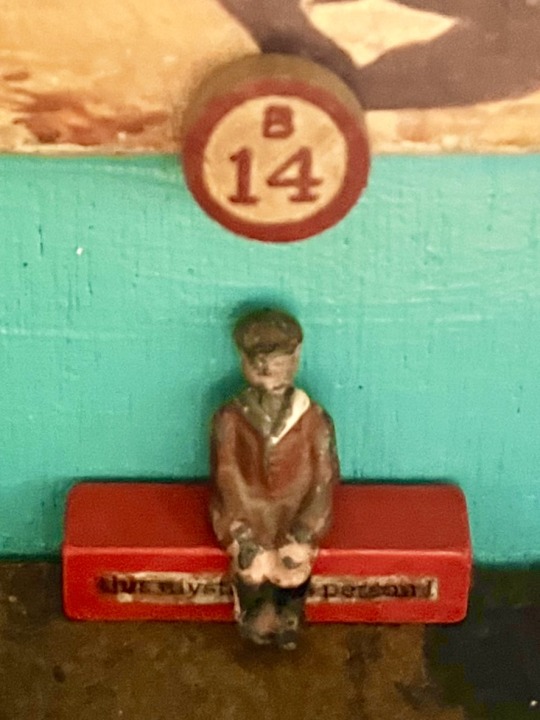
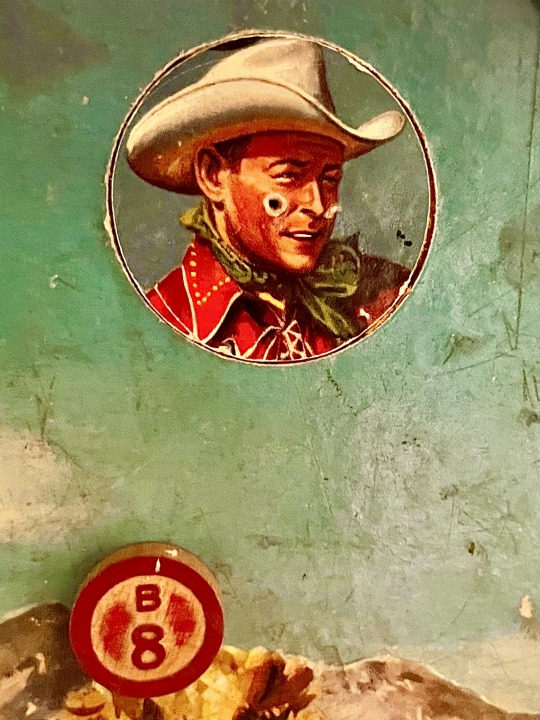
This Mysterious Person I
(aka Roy Rogers & The Tree of Life)
assemblage completed 1.7.16
approx W20" × H8" × D1.5" (left) & 2.5"(right)
#perceptualism#found objects#box art#jesus#faith in jesus#jesusfreak#roy rogers#lost toy#assemblageart#diorama#dioramic
3 notes
·
View notes
Text
Horoskop
Jagna Sosjerka, 30.04.2024
Horoskop na następny miesiąc dla wszystkich znaków zodiaku. Nie wystarczy słuchać głosu Wegi. Musisz przekazywać jej słowa dalej.
Horoskop na maj - Baran (21 marca - 19 kwietnia) Żeby nadrobić za zeszły miesiąc, masz tym razem 2 horoskopy: - Nadchodzi czas trudnych decyzji. W niedalekiej przyszłości zmierzysz się z problemem, który będzie wymagał od ciebie dużo wysiłku. Musisz zachować spokój i pamiętać, że są ludzie, na których możesz polegać. - Najbliższy miesiąc będzie spokojny, tak długo, jak nie będziesz ufać nikomu. Rozluźnij się, ale uważaj na siebie.
Horoskop na maj - Byk (20 kwietnia - 20 maja) Mam nadzieję, że nadal patrzysz w górę. Jeśli tak, to nie przestawaj. Serio, nie. Nie patrz w dół. NIE PATRZ W DÓŁ
Horoskop na maj - bliźnięta (21 maja - 20 czerwca) Jebać bernadetę żmijowiec
Horoskop na maj - Rak (21 czerwca - 22 lipca) Nie jedz tego mięsa. Wiem, że wygląda dobrze, ale będziesz chorować, jeśli je zjesz.
Horoskop na maj - Lew (23 lipca - 22 sierpnia) Jeśli czekasz na znak od losu, oto i on. Ja jestem los. Ten znak to D-1.
Horoskop na maj - Panna (23 sierpnia - 22 września) Vouloir, c'est pouvoir, exegi monumentum aere perennius, kaiidth.
Horoskop na maj - Waga (23 września - 22 października) Czerwone niebo. Pełnia Słońca, księżyc w zenicie. Kolorowe gwiazdy na szarym tle. Ty i Twój koń w miejscu przecięcia dwóch wielkich rzek.
Horoskop na maj - Skorpion (23 października - 21 listopada) Wychodź więcej na słońce, tylko pamiętaj o kremie z filtrem. Nie przesadzaj też z witaminami, zwłaszcza tymi rozpuszczalnymi w tłuszczach.
Horoskop na maj - Strzelec (22 listopada - 21 grudnia) Ok, ktoś musi Ci to powiedzieć. Kolejny rewatch Naruto to nie jest dobry, ani zdrowy sposób spędzania czasu. Za to robienie dioram owszem.
Horoskop na maj - Koziorożec (22 grudnia - 19 stycznia) x
Horoskop na maj - Wodnik (20 stycznia - 18 lutego) Ok, musimy sobie coś wyjaśnić.
Horoskop na maj - Ryby (19 lutego - 20 marca) GAY SEX GAY SEX GAY SEX GAY SEX
#horoskop#kłykcie#kłykcie lewe#polska wieś#polska#wieś#polish tag#poland#polish#polblr#polski tumblr#polskaposting#polandposting#polishcore#polishposting#oc#oc writing#mockumentary#parody#unreality
31 notes
·
View notes
Text
@theamityelf has a Hatchetfield/Danganronpa AU and even though it’s still a wip, I still really like the concept and kind of want to make my own interpretations on which characters I think would take which roles. And if you don’t like that Amity, send me a message and I’ll take this down, just give me the word. But other than that get ready to read the longest and most meaningless post that absolutely no is going to care about.
In theamityelf’s au the Lords in Black are taken up by Izuru, Junko, Nagito, Tsumugi, and Mikan while Max’s role is taken by Monaca. But, just thinking out loud here. The Lords in Black should be the Warriors of Hope.
The Lords in Black have a very childish feel to them. They hang out in amusement parks, sell marketable plushies, and play with their toys. In the starkid fundraiser livestream one of the previewed nightmare time stories involved TLIB Dressing up as kids for Halloween.
If we’re being specific I think Monaca would be Wiggly. In Black Friday Wiggly’s got everyone thinking he’s the cutest thing since baby Jesus and Monaca has manipulated her whole group to be at her beck and call even though she isn’t even the leader. Her little meow is the closest you can get to Wiggly’s baby talk tho.
Jataro would be Tinky. He turns his victims into art dioramic toys to play with and just generally has an eccentric cruelty that I feel suits Tinky more than the other kids. He’s a little tinker
Nagisa I think would be Blinky. He is the more level headed of the warriors of hope and I think that pairs well with Blinky’s stay on the sidelines and watch the fun compared to his brothers directly causing it. Wiggly wouldn’t be a bad role to give Nagisa due to his “leader” status, but I just think Monaca suits it more.
Kotoko would be Nibbly. Originally I thought of her more as Pokey due to her lil ultimate drama title. But after thinking it through I think she resonates more With Nibbly.(at least more than Masaru does) She’s got an affinity for sweets and the Honey Pageants resemble her acts of torturing the people she considers the cutest.
Masaru just has to be Pokey cuz there is no one left and he just doesn’t seem to fit with any of TLIB unfortunately. I guess you could see it as him taking leadership by taking complete control over the people of Hatchetfield or how he was the first warrior of hope you fight and Pokey is the first Lord in Black we ever meet.
I really can’t see Webby as anyone other than Komaru. The connection to the warriors of Hope and her positive but realistic demeanor makes her perfect as this version of TLIB’s foil I think.
Sorry for bothering you and desecrating your AU with my nonsense Amity. Take this as consolation

Tumblr makes it look bad but I hope you like it.
7 notes
·
View notes
Text
’Movement; Posable Paper Dolls’
Upon discussing my initial proposal with tutor Paul Gardiner, I was directed to explore more analogue forms of animation. To this end, whilst I was directed to take this down a more collage-like way with cut textured paper, I did skew this concept toward the idea of paper puppets, instead.
Given I was proposed this under the idea of imposing limitations on myself, I will likely push this in different ways, possibly by taking textured, coloured paper and using that alone to compose more of this style of puppet.
For the meantime, however, in an effort to explore this character, I composed a one-joint head and boa puppet in order to test the plug-like structure used for the articulation. I then moved to connecting a more intricate structure with the arm and upper-waist incorporated into the second iteration.
I believe bringing a layered, dioramic approach to this may be interesting, especially with colour, where the shadow amy be enhanced to give more of that layered appearance of depth.




2 notes
·
View notes
Text
i like smithers and i think it's cool he collects dolls....... i think it makes a lot of sense for him as someone who is attracted to feminine expression despite it being a world that can be very difficult to feel comfortable in, especially if you are a person of certain upbringings or proportions. shopping for clothes that can fulfill your gender expression-related aspirations can be so goddamn difficult, especially when they're rarely suited for your body, and on top of that, it can amount to so many expensive disappointments. along with that, there's an unease that comes with expressing femininity when you don't feel well trained for it. (in the words of hedwig (bite me,) "some girls they got natural ease, they wear it any way they please.") so many experiences can build you a self that is just not very confident in the realm of femininity, and being transfeminine in particular makes the world of femininity feel both foreign and more true to you than anything else ever could. that is so daunting. with that being true, i believe malibu stacy is one of smithers' greatest means of self expression, because every doll is a perfect encapsulation of style that you can always trust. it's not a dress that you can outgrow or tear and it's not a wig that can be mussed, it's a dioramic vision of perfect femininity and being able to see that all of the time can provide an intimate sense of fulfilment without the stress of trying to mold yourself into something you don't quite know how to be, or have the MEANS to be. i think smithers looks at all of his stacy dolls and sees herself, or himself, depending on the mood.
#talk talk#i have similar feelings about the dolls i collect and it's just such an easy conclusion to draw about smithers
4 notes
·
View notes
Text
Diorame Pentru Bibliotecă - Obiecte Decorative Unice - RobotimeOnline.ro
https://robotimeonline.ro/diorame-pentru-biblioteca/
0 notes
Text
On gardens
Gardens can be seen as indexical representations of a scene where illustrations or paintings would form the referential representation of a view of that same scene.
For example we can look at the materiality of the gardens of Gertrude Jekyll compared to those referential images of Monet's gardens at Giverny. Monet in fact took to gardening in order to create scenarios that he could use as subjects for his paintings.
In a way is a framing, and an othering of nature. It follows from the practices of the Victorians who would take taxidermied animals and synthetic trees and planting specimens to create dioramas. In Speculative Taxidermy by Giovanni Aloi he mentions that
Olof Gylling, a scientist trained in taxidermy and a landscape painter, in 1902 added the painted backdrop to his scenes and also introduced the term diorama in this context. The same year, across the ocean, Frank Chapman's diorama including a painted background was unveiled at the American Museum of Natural History in New York. Chapman was the curator of ornithology at the museum, and he nurtured a fervent conservationist ideology that brought him to closely consider the emotive effect of painted scenes in sensitizing public opinion. This was the professed motivation behind the desire to construct dioramic scenes: environmental conservation campaigns required awe-inspiring visuals to promote legislative changes and mobilize public opinion: How could city dwellers care for and support the conservation of nature they could never see? In some cases, this strategy worked. The institution of the first federal bird reserve was largely motivated by Chapman's diorama of Pelican Island, which persuaded president Theodore Roosevelt to declare it proected land.
Gardens are in a way experiential three-dimensional representations of a concept of nature. You are able to walk around a garden; that is, you are able to experience it in a way that you are unable to experience a painting. But a garden itself exists outside of nature: it's not a copy of nature directly - it looks nothing like it. Hybridized plants are the norm for garden planting. In a way gardens are a form of hyperreal landscape where the contained specimens (from the latin stem 'to see') are copies of objects that have no real original. A garden is a synthesis of a concept of nature that has no archetype.
1 note
·
View note
Text

#perceptualism#found objects#found object#assemblageart#art#art show#art exhibition#3dart#joseph cornell#box art#diorama#dioramic#parables
0 notes
Text
The Last Time Wardens is dioramic horror twisted into supernatural crime drama
The Last Time Wardens is dioramic horror twisted into supernatural crime drama #comics #comicbooks

View On WordPress
#amit tishler#comic books#Comics#elliot sperl#francesco segala#frank cvetkovic#mad cave studios#rui silveira#skylar patridge#the last wardens#zach howard
0 notes
Text

Revolving Pictures, A Novel Colour Book with Dioramic Effects (ca. 1891–1899) published by E. P. Dutton and Company
0 notes
Text
2135 4Feb24: Chapter 35.1
Looking at feasibility and, of course, pricing... a 4 foot by 8 foot dioram map is going to be probably my best bet. Next is looking at making fake trees... my mind is saying PVC and Plaste of Paris.... roughly 25 trees to start with.. I'll pay my nephew 50 pesos per tree, which offers him the ability to earn 1250 pesos... I'd say that a nice little way to make some cash... we next need to track down and collect a nice little bucket worth of small stones, which I'd use to make a few props as well as the water well and maybe part of the earth oven base... of course, I need to blueprint everything. But this week besides sewing I think I'm going to do some editing of the story so then I can storyboard as well as possibly start mapung out how I want the path to be set up and where all the trees will be positioned so I can shot list where the camera should be for each shot.
0 notes
Note
hey idk if you use sc at all, but if you do and want to add me it’s graysalvatore; if not no big deal ofc 🖤 I’m currently pruning my very toxic friends list on there and trying to replace them with kind mutuals lmao
Oh yes I do use SC! Lmfao for only one friend on there but always love talking to kind mutuals!!
Literally no limit on how many of y’all add me. Just tell me ya from the hellsite™️ and I’ll instantly know c;
I hear on toxic friendships. I’m really trying to work on myself not only for me but my son.
Added ya and others who are curious or just too shy mines: @dioramic
1 note
·
View note
Text

FLP CHAPBOOK OF THE DAY: WANDERING by Georgia San Li
On SALE now! Pre-order Price Guarantee: https://www.finishinglinepress.com/product/wandering-by-georgia-san-li/
WANDERING is a debut #poetry #chapbook that delves into questions of #myth and meaning through a multi-voice prism of broken #histories, ambition, abandonment, connectivity, love and desire. These themes are explored in a five-part arc: dream making, death sequence, flood waters, earth & gravity, and re-memory material & time.
GEORGIA SAN LI is currently at work on poetry and Portrait: From the Tarmac, a novel. She has worked on assignment in cities including London, Tunis, Denver, Mexico City, Sao Paulo, Paris, Wilhelmshaven, and Tokyo. She currently lives and works in New England.
PRAISE FOR WANDERING by Georgia San Li
That the speaker of Wandering knows displacement well is reflected in the explosive power of the poems’ images: a widow’s thank-you cards, a discarded banana peel rolled into a paper cup, the bravery of “new summer peaches and pears…displayed to face the soggy dawn.” These deeply moving poems understand, and evoke vividly, the way the past blossoms suddenly in the present. One of their many gifts is to give voice to the contradictory nature of human experience—how the seemingly solid can shift, and how uneasily we abide in the temporary now, like the passengers in the “small, small / disconnected world” of an airport in pandemic time, “waiting in the air of masks, / each of us alone and surrounded, / waiting to enter somewhere else.”
–Nan Cohen, author of Unfinished City and Thousand-Year-Old Words
The poems in Wandering, by Georgia San Li may follow a wavering path as the title suggests, but they do so with an intense commitment to the oases they encounter along the way. The containers and punctuation may shiftshape in adherence to the tempers the verses determine, but all the while, the speaker builds detailed dioramic worlds that demonstrate a tensile strength uncommonly rich on the page. Li writes of exodus and war, mortality, family, and faith, but without suffering or sentimentality. The power of these poems, accumulates exponentially as you go, delivering an abundance of nutriment and endurance for the reader with an unsparing beauty and attention. These are poems of transportment, “where I would succumb to / intoxication, the sultry taste of the earth in / my mouth, and where I lost all sense of outer space.”–
–Peggy Dobreer, author of Forbidden Plums, curator of Slow Lightning Lit
Wandering is a kaleidoscope of a collection, a glorious layering of past and present, colour and grit, moving together and coming to rest in a new shape. I loved it.
–Anna Freeman, author of The Fair Fight
Georgia San Li’s, Wandering, is a collection of fearless poetic imaginings that guide the reader with a supple hand through the nervy rawness of posing the question: Why come this far? The poems animate the cracks of life, dissolving and swirling into atmospheres of awe, uncertainty, and into the light of irony, family, and how we hold on or let go.
–Emily Rubin, author of Stalina
Please share/please repost #flpauthor #preorder #AwesomeCoverArt #poetry #chapbook #read #poems
#poetry#flp authors#preorder#flp#poets on tumblr#chapbook#chapbooks#finishing line press#small press
1 note
·
View note
Text
The diorama was a 19th century light-based medium that featured two immense paintings lit from the front and through the back inside an otherwise pitch-black, rotating auditorium. The diorama combined techniques of opaque and translucent painting with methods of manipulating natural light in a live spectacle.
The diorama was invented by the set designer and painter Louis-Jacques-Mandé Daguerre (together with the architectural painter Charles Marie Bouton) seventeen years before he perfected the daguerreotype process of photography. The daguerreotype would, in the words of Daguerre, "fix the objects reflected in a camera obscura" (Daguerre 78). In contrast to the photographic impulse, the effectiveness of the dioramic image depended on the constant, visible movement of light manipulated with shutters and screens both onto and through a semi-translucent painting. The in-formation of light was thus performed and experienced in real-time, rather than captured and stored for future purpose. Similarly, the spectator expected the illusion "to represent the effects of nature" (Daguerre 84), not to secure "the objective ground of visual truth" (Crary 14) via camera obscura.
Realism and illusion: the right and wrong sides of the screen
The patent for the first diorama built in London in 1823 describes the device as “an improved Mode of publicly exhibiting Pictures or Painted Scenery of every Description and of distributing or directing the Day Light upon or through them, so as to produce many beautiful Effects of Light and Shade.” As this account indicates, the dioramic picture was both a transparent conduit and an opaque screen, with the effects of light and shade directed both upon and though its substance.
The diorama thus operated according to both catoptric and dioptric principles. As Daguerre describes, “the first effect painted on the right or front of the canvas is lighted by reflection…while the second effect—that painted on the wrong side—receives its light by refraction, that is, from behind only” (Daguerre 83). The right side, facing the spectator, is the realm of the "illusionizing potential of projection, the production of artificial reality" (Zielinski 86). The wrong side belongs to the operator and/or the painter, who performs the catoptric illusion by seeing through it.
The dioramic screen with worker behind and spectators in front, 1848.
On a semiotic level, the "wrong" or dioptric side of the painting was opaque to those who did not possess the knowledge of “dioramic art” (Daguerre 85). Painters schooled in the dioramic technique inscribed the back of the painting with functional nonsense, a language of light and shadow that, in a complete reversal of the painting’s façade, corresponded not the referent of the natural world, but to the forms showing through from the front of the canvas. This secondary inscription would be illegible to the spectator accustomed to representational images. In order to create a heightened illusion of reality, this mode of painting thus broke out of the camera obscura model that relied on a founding referent (Crary 14).
Though, like the mechanically reproduced image, the verso of the dioramic painting was abstracted from a stable, objective referent, the double-sided screen nevertheless divides the complex knowledge of the practitioner of realist illusion from its witness, the spectator. In contrast to the photograph, which, as Walter Benjamin described a century later in his celebration of film, freed the image of the cathedral to “meet the beholder halfway” (Benjamin 220), the image of the cathedral reproduced in the diorama is wrapped not only in the lux of spectacular illusion, but in the aura of an original work authored by a virtuosic artist-scientist.
References
Arrowsmith, John. Diorama Patent, British Patent No. 4899, February 10, 1824. Transcription from http://www.midley.co.uk/.
Benjamin, Walter. Illuminations. New York: Schocken Books, 1968.
Crary, Jonathan. Techniques of the Observer. Cambridge: MIT Press, 1992.
Daguerre, Louis-Jacques-Mandé. An historical and descriptive account of the various processes of the daguerréotype and the diorama. London: McLean & Nutt, 1839.
Debord, Guy. The Society of the Spectacle. Rev. ed. Detroit: Black & Red Books, 1977.
Gernsheim, Helmut and Alison. L.J.M. Daguerre: The History of the Diorama and the Daguerrotype. 2nd Rev. ed. New York: Dover Publications, Inc., 1968.
Schivelbusch, Wolfgang. Disenchanted Night: The Industrialization of Light in the Nineteenth Century. Berkeley: The University of California Press, 1995.
Zielinski, Siegfried. Deep Time of the Media. Cambridge: MIT Press, 2006.
0 notes
Text

The Loyal Subjects, Superama, Marvel Black Panther Diorama Limited Edition Collectible Action Figure
Limited Edition, Super-Hero dynamic dioramic mashup! Infusing comic styled environments with your favorite fully posed Marvel character! Features Black Panther in his iconic outfit featuring subtle charcoal gray accents that line his suit and an incredible silver finished vibranium claw necklace, wire cuffs and claws in a beautiful silver finish to this commanding look Full display specs are over 4-inches tall, fun sculpt details, and crisp deco Backboard images are swappable/interchangeable for each diorama Showcased in beautiful Marvel branded four-sided window box display packaging Collect all The Loyal Subjects Marvel Superama Dioramas! Spider-Man, Groot, Hulk, Venom and Carnage! Sold Separately
Product information Product Dimensions 2 x 2.5 x 4.25 inches Item Weight 5.3 ounces Manufacturer Loyal Subjects Country of Origin USA Item model number SUPMARVELBLKPWB01 Included Components Scenic Diorama and Base
1 note
·
View note